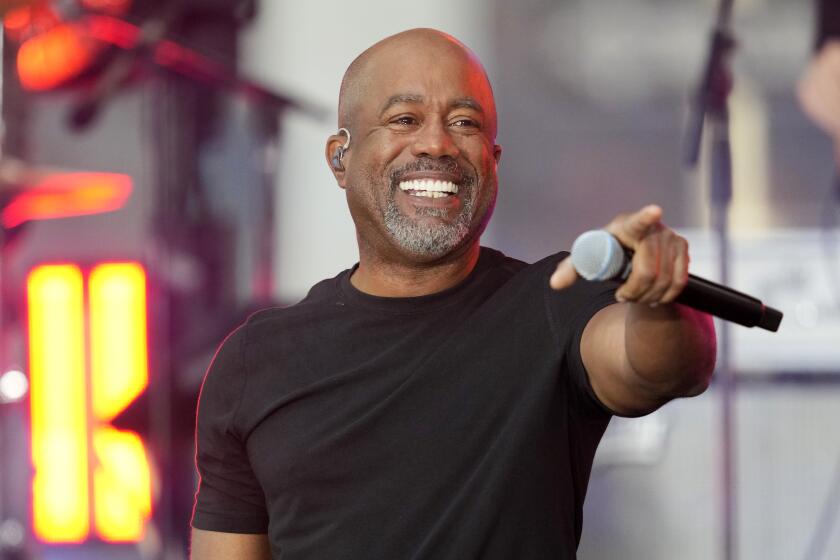Names Change, but Hearts Beat the Same
Peter Noone, Davy Jones and Bobby Sherman hail from the golden age of teen idols.
Today, their young heirs in Hanson, the Backstreet Boys and the Spice Girls are generating enough heat to end an ice age that saw more than half a decade go by without a full-fledged musical teen idol.
It was as simple as this: in 1990, the New Kids on the Block scored their last big hits. In 1991, Nirvana’s “Nevermind” album ushered in a long stretch of domination by grunge and punk rock--a movement whose sour, ribald or notoriously drug-addled personalities didn’t afford good pinup fodder for the 12- and 13-year olds who are the main audience for idol-worshiping pulp magazines such as Tiger Beat, Bop and 16.
All major teen idols share key common attributes, according to Carrie Yasuda, managing editor for the Studio City-based magazines Bop and BB.
“All the guys are very cute. What makes them appealing to teens is they’re more innocent looking; they’re not threatening. They sing songs these girls can relate to. The lyrics are fun and simple, and they can sing along with their friends. Thirteen-year-old girls feel threatened by long-haired, unshaven [grunge-rock] guys who drag themselves onstage and are full of angst. They want happy, uplifting things.”
The teen idol’s role is to be literally dreamy to kids entering the innocent, well-pruned fringes of the forest of sexuality.
Serena Kappes is an editor at New York City-based Sterling/Macfadden Partnership, which publishes seven monthly and quarterly magazines directed primarily at girls 10 to 15, including the venerable 16 and Tiger Beat.
“They’re still at that age when crushes are a big deal,” she said. “They’re not into real boyfriends.”
Over the past year, circulation for Sterling/Macfadden’s teen magazine group has risen from 600,000 to 900,000, according to John Garoly, the company’s advertising representative. The era of Hanson has brought a similar upswing for Laufer Publishing, another major player in the market. Combined sales of Bop and BB are up from 288,000 to 400,000, said publisher Scott Laufer.
Teen idol chroniclers regard this as a boomlet, not a gold rush: Laufer said that during the New Kids’ late-’80s heyday, circulation was more than double what it is now. The peak for teen-crush magazines came in the mid-to-late ‘60s, when puppy-lovestruck baby boomers made up a huge audience that couldn’t turn to MTV or VCRs for a daily cooing session. In 1967, the height of Monkeemania, 16 magazine enjoyed monthly sales of nearly 1 million copies, according to “Who’s Your Fave Rave?” a history of 16 by its former editor, Randi Reisfeld, and longtime pop insider Danny Fields.
Laufer says that the star-struck young readers of teen-idol magazines have changed “very little” over the years, the lone difference being that they’re starting puppy love at a younger age--9 or 10 for Hanson, as opposed to 11 for the New Kids and 12 for Duran Duran.
“But if you compare letters we get today and letters sent in 1983, they’re remarkably similar. It’s remarkable how similar kids are today to kids 20 years ago.”
One Hanson fan is Natalie Noone, 11, daughter of Peter, who knows a bit about teen idols.
“She likes the music,” he said. “She doesn’t want to marry them. Maybe she does. I’ll have to ask her later.”
More to Read
The biggest entertainment stories
Get our big stories about Hollywood, film, television, music, arts, culture and more right in your inbox as soon as they publish.
You may occasionally receive promotional content from the Los Angeles Times.











